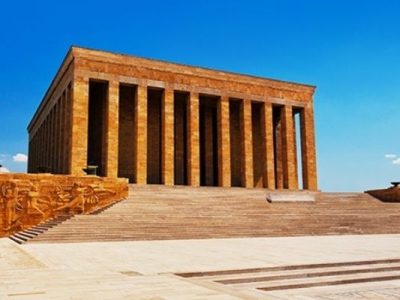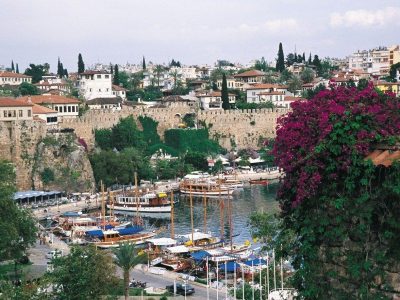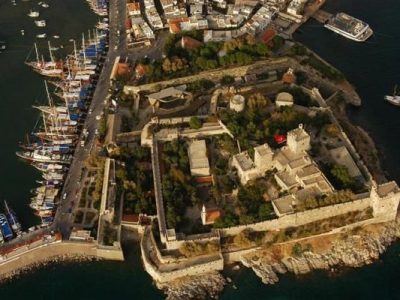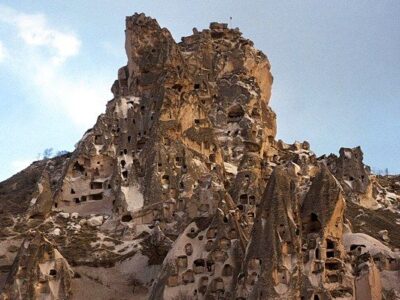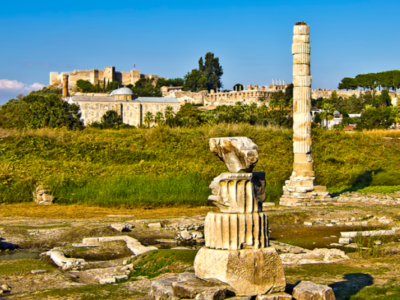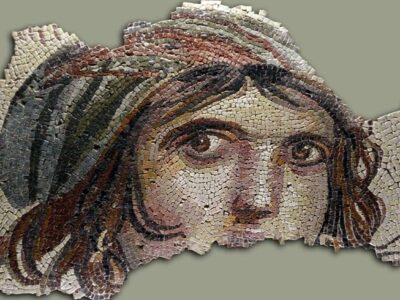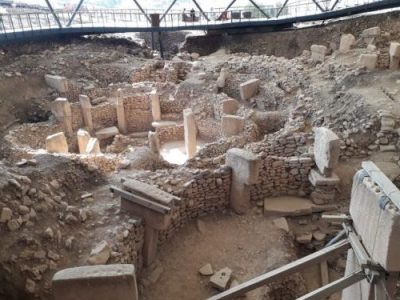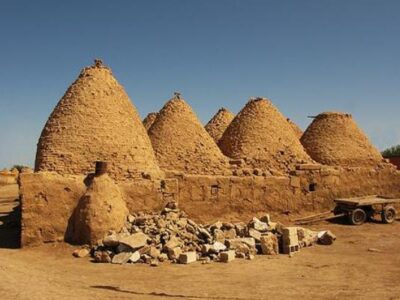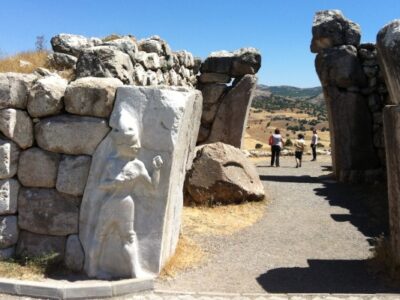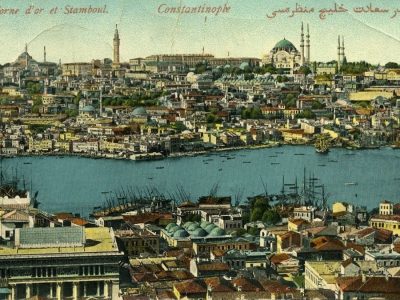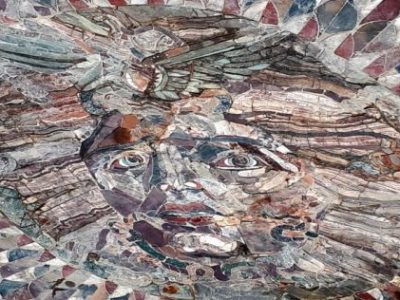Turkey
Turkey is a fascinating and beautiful country with a magnificent past, a land full of historic treasures covering thirteen successive civilizations. Roman temples, Seljuk Caravanserais, ancient Hittite sites, Ottoman mosques and palaces, the famous Grand Bazaar in Istanbul with its maze of over 4000 shops, ancient cities like Ephesus, UNESCO World Heritage sites such as Safranbolu with its traditional Ottoman houses, the stupendous colossal statues, lions and eagles on top of Mt. Nemrut (2150 meters / 7054 feet) at sunset, the magnificent Holy City complex in Sanliurfa with its Pool of Abraham full of sacred carp, and surrounded by exquisite 17th century architecture, capped pinnacles known as ‘fairy chimneys’ in a variety of colors, where dwellings are known to have been hewn from rock as far back as 4,000 B.C., and the spectacular Mediterranean coastline.
LOCATION
Turkey is located in south Eastern Europe. It is bordered on the northwest by Bulgaria and Greece, on the north by the Black Sea, on the northeast by Georgia and Armenia, on the east by Iran, on the south by Iraq, Syria, and the Mediterranean Sea, and on the west by the Aegean Sea. The total area is 780.000 square meter (301.159 square miles)
PEOPLES
Population 82 million (approx.)
Ethnic divisions
Turkish 75 per cent
Other 25 per cent
LANGUAGES
Turkish is the national language. English is widely spoken in main cities and tourist areas. (English is an increasingly popular second or third language) German is also widely spoken at the tourist areas along the Mediterranean Sea.
CURRENCY
Turkish Lira. The US dollar and Euro are the preferred currencies for travel. ATM’s are widespread. Major credit cards are accepted in most tourist hotels, restaurants and major stores.
VOLTAGE
Mainly 220 AC. Plugs are usually the two-pronged cylindrical European style.
BUSINESS & BANKING HOURS
For banks and state offices:
Monday-Friday 9.00 a.m. – 12 noon and 1.30 p.m. – 5.00 p.m.
For shops and the private sector:
Monday-Friday 9.00 a.m. – 12 noon and 1.30 p.m. – 6.00 p.m.
Saturday 9.00 a.m. – 1.00 p.m.
Shopping malls in the big centers and some tourist shops:
Monday-Sunday 10.00 a.m. – 10.00 p.m.
Note that shops often stay open later in the main tourist areas.
TIME DIFFERENCE
Turkey has one uniform time zone 2 hours ahead of the UK and 1 hour ahead of continental Europe. Turkey is 7 hours behind Australian Eastern Standard Time and 7 hours ahead of US Eastern Standard Time.
HEALTH REGULATIONS
Except those for COVID-19, no vaccinations are required and needed unless arriving from an infected area. Turkey has the same health standards as in European countries.
PHONE SERVICES
Phone cards or tokens are used for calls from public phones. Wide mobile range is available.
MEDICAL SERVICES
All types and standards of services are available.
TIPPING
10% is general practice at the hotels and restaurants
The following is just an indication for those who will be doing guided tours, though tipping is at the discretion of the guests
App. US$10 p.p. per day for your guide and half of this for the driver is suggested for minimum 10-person tours. We would suggest the daily amounts higher than these for the tours with only 2-3 participants.
CLIMATE
The climate varies slightly depending on which region you are visiting. However overall the best time to travel in Turkey is from May to October, with temperatures ranging from an average of around 22°C (72°F) in the early and latter months, to around 32°C (90°F) in the summer months (June-August). Note that temperatures can reach up to 46°C (115°F) in July and August. Coastal Turkey has hot summers with little rain and mild winters. Inland areas have longer and harsher winters.
TEMPERATURES in Degree
(Monthly Averages of Midday Values)
| Jan | Feb | Mar | Apr | May | Jun | Jul | Aug | Sep | Oct | Nov | Dec | |||||||||||||
| F | C | F | C | F | C | F | C | F | C | F | C | F | C | F | C | F | C | F | C | F | C | F | C | |
| ISTANBUL | 43 | 6 | 43 | 6 | 45 | 7 | 54 | 12 | 63 | 17 | 70 | 21 | 75 | 24 | 75 | 24 | 68 | 20 | 61 | 16 | 54 | 12 | 47 | 8 |
| IZMIR | 48 | 9 | 50 | 10 | 54 | 12 | 61 | 16 | 70 | 21 | 77 | 2 | 82 | 28 | 82 | 28 | 75 | 24 | 66 | 19 | 59 | 15 | 52 | 11 |
| ANTALYA | 52 | 11 | 54 | 12 | 56 | 13 | 63 | 17 | 70 | 21 | 77 | 25 | 84 | 29 | 84 | 29 | 77 | 25 | 70 | 21 | 61 | 16 | 54 | 12 |
| ANKARA | 34 | 1 | 34 | 1 | 41 | 5 | 54 | 12 | 63 | 17 | 68 | 20 | 75 | 24 | 75 | 24 | 66 | 19 | 56 | 13 | 47 | 8 | 37 | 3 |
WHAT TO WEAR
There is no dress code in Turkey and a complete freedom can be enjoyed in this regard. Though not compulsory, a headscarf and modest dress is recommended for women only when visiting mosques. When visiting Mt. Nemrut (2150 meters) at sunset, take warm clothing, as when the sun sets the temperature drops rapidly. It is also very windy and cold on top of the mountain even at hot summer days.
TRANSPORT AND COMMUNICATION
Many of the major airlines have direct flights to Turkey. The principal airports for international scheduled flights are in Istanbul and Ankara. There are rail and road connections to Asia and Europe and hydrofoil or ferry services to several Greek islands. For local travel there is an excellent bus network, some rail sectors, domestic flights to the major cities, and coastal ferries.
Taxis, buses, trams, metros, dolmus (shared taxis), and ferries (in Istanbul) provide public transport.
Around major urban areas, the roads are paved and in good condition. In rural areas, the infrastructure is generally adequate but not always well maintained. The communication system is fairly good, although telecommunication services (both domestic and international) are best in urban areas. There are several national television and radio stations. There is a wide selection of daily newspapers.
DRIVING
Driving is on the right hand side of the road. Excellent signage in English script and well-maintained road network. An Australian or American driving license is acceptable for driving in Turkey.
FOOD & DRINK
Turkish cuisine is rich and diverse and is one of the world’s best and healthiest. Food is prepared using the freshest ingredients.
Breakfast is usually light, consisting of tomatoes, cucumbers, cheese, olives, bread, butter, jam, honey, and tea or coffee. The main meal of the day is eaten in the evening and may consist of several courses.
Traditional Turkish cuisine includes meze, a tray or table of small dishes, including stuffed vine leaves, salads, prawns, and a variety of other items, as well as shish kebab (cubes of lamb grilled on a skewer). Meat is often grilled. Fish is fairly plentiful along the Bosphorus and the coast, but tends to be expensive. Vegetables are usually prepared in olive oil, and rice pilaf is common. Soups are an important part of the diet. Turkish desserts include baklava (a dessert of syrup and pastry) and muhallebi (milk pudding).
Turkish coffee (kahve), a thick brew served in small cups, is served with nearly every meal. Famous and popular dishes include: kebabs, vegetable dishes, pide, and baklava. Turkish people also enjoy locally made beer, wine, and spirits. The national drink is raki, an aniseed-flavored clear grape brandy, similar to Greek ouzo or French pastis that clouds when water is added.
SHOPPING
Traditional crafts include carpets and kilims, leather and suede, copper and bronzeware, gold and silver jewelry, meerschaum pipes, embroidery, ceramics and onyx. Istanbul boasts great shopping with its famous historic Grand Covered Bazaar containing over 4000 shops, and its fascinating Spice Bazaar. There are modern shopping malls and boutiques in Istanbul, Ankara, Izmir, Antalya and Bursa carrying the latest fashions and goods. There are also modern shops and traditional bazaars throughout Turkey.
HOLIDAYS AND CELEBRATIONS
Religious holidays are calculated according to the lunar calendar and vary from year to year.
Secular holidays in Turkey are calculated according to the Western calendar. Other official holidays include New Year’s Day (1 January); National Sovereignty Day (23 April, coinciding with Children’s Day), Ataturk’s Memorial Day and Youth Day (19 May); Democracy and National Solidarity Day (15 July) Victory Day (30 August); and Republic Day (29 October). July and August are when most people take their annual holiday.
PASSPORT & VISA REQUIREMENTS
There are different practices with regards to the visa requirements. The valid visa information can be found at http://www.mfa.gov.tr/visa-information-for-foreigners.en.mfa
ISTANBUL FOR HANDICAPPED PEOPLE
St. Sophia Museum:
There are ramps in the museum, which are appropriate for wheelchair users. Access to the second floor is not possible even with a companion. The nearest toilet for the disabled people is in the Archaeological Museum.
Blue Mosque:
Due to the number of the stairs, the Mosque is not compatible for the wheelchair users even with a companion. The nearest toilets for the disabled people are at the Archaeological Museum and Four Seasons Hotel.
Hippodrome:
Considering the pavements and roads paved with cobblestones, it is recommended to visit this area with a companion. The nearest toilets for the disabled people are at the Archaeological Museum and Four Seasons Hotel.
Yerebatan Underground Cistern:
The museum is not suitable for the wheelchair users even when they have a companion. The nearest toilets for the disabled people are at the Archaeological Museum and Four Seasons Hotel.
Topkapi Palace:
There are ramps at many points. The areas within the 1st, 2nd and 3rd courtyards of the Palace are suitable for the unaccompanied wheelchair users. Due to the stairways, restaurant, café and Harem sections are not suitable for the wheelchair users even with a companion. The nearest toilets for the disabled people are at the Archaeological Museum.
Beylerbeyi Palace:
Not suitable for wheelchair users even with a companion. There is no toilet for the disabled people.
Dolmabahce Palace:
Not suitable for wheelchair users even with a companion. There is no toilet for the disabled people.
Covered Bazaar:
It is considered suitable for the accompanied wheelchair users due to the fact that the ground is made of rough cobblestones. Entrances and almost every part of it are at the ground level, but its uphill location may cause difficulties for the wheelchair users. Toilets for the disabled people are available at 3 different points.
Spice Bazaar:
The bazaar has 4 gates and only one of them has stairs. The other three gates are suitable for the access of the wheelchair users. There is no toilet for the disabled people.
The Archaeological Museum:
Since the road leading to the Museum is made of rough cobblestones, it is suitable for the wheelchair users only if they have a companion. Because of the stairs at the main entrance of the Museum, another gate is allocated for the visitors in wheelchairs. There is a toilet within the main building for the disabled people.
Military Museum
This is suitable for the wheelchair users without a companion. There is a toilet for the disabled people.
Chora Museum
A handicapped person can easily enter the building with the help of the museum staff. There is no toilet for the disabled people.
Istanbul Modern Art Museum
100% compatible for the wheelchair users. Many solutions including gate passages, ramps and lifts. There is a toilet for the disabled people.
Pera Museum
100% compatible for the wheelchair users. Many solutions including gate passages, ramps and lifts. There is a toilet for the disabled people.
Rahmi Koc Industry Museum
100% compatible for the wheelchair users. Many solutions including gate passages, ramps and lifts. There is a toilet for the disabled people.
Miniaturk Open Air Museum
There is a ramp with a slope angle of 16 degrees at the main entrance. There are two toilets at two different spots for the disabled people.

